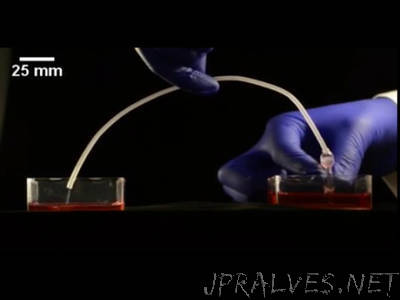
“For the millions of people every year who have or need medical devices implanted, a new advancement in 3D printing technology developed at the University of Florida promises significantly quicker implantation of devices that are stronger, less expensive, more flexible and more comfortable than anything currently available. In a paper published today in the journal Science Advances, researchers lay out the process they developed for using 3D printing and soft silicone to manufacture items that millions of patients use: ports for draining bodily fluids, implantable bands, balloons, soft catheters, slings and meshes. Currently, such devices are molded, which could take days or weeks to create customized parts designed to fit an individual patient. The 3D printing method cuts that time to hours, potentially saving lives. What’s more, extremely small and complex devices, such as drainage tubes containing pressure-sensitive valves, simply cannot be molded in one step. With the UF team’s new method, however, they can be printed. “Our new material provides support for the liquid silicone as it is 3D printing, allowing us create very complex structures and even encapsulated parts out of silicone elastomer,” said lead author Christopher O’Bryan, a mechanical and aerospace engineering doctoral student in UF’s Herbert Wertheim College of Engineering and lead author on the paper.”
